On Saturday, October 10, 2011, we toured the site of the Palestinian village of ‘Aqir, south of Ar-Ramlah (Ramla), where the Jewish settlement of Kiryat Ekron was built. Israel destroyed all 700 Palestinian houses in ‘Aqir, including its two mosques and schools, except for a few houses still standing here and there in the neighborhoods of the new town which are now home to Jewish families. The Palestinian cemetery has also survived, fenced and preserved, at the center of Kiryat Ekron.
About 70 Israelis, Palestinians and foreigners took part in the tour, learned about the village that used to be here and met with children of refugees from ‘Aqir. After its military occupation on May 6, 1948, most of the village's 3,000 inhabitants sought refuge in nearby Palestinian villages that had not yet been occupied. Some of them remained in the village but were immediately deported by soldiers from Givati Brigade which had conquered ‘Aqir. Only five local youngsters from the families of Al-Zenati, Abu-Layla, Al-‘Awur, Abu-Ghazal and Jabr remained, under different circumstances, within the borders of the new State of Israel. A few members of two other families – Ramadan and Sidam – joined them later. The new state allowed them to reside in Al-Lidd (Lod), no more than 7 miles from ‘Aqir, but did not let them return to their village homes. They started families in Al-Ludd, and whoever was married – like Umar Al-Zenati – brought his wife and children from Gaza to al-Lidd.
The children of these refugees took part in the tour and shared the complex stories of their parents' refugeehood and their desire to regain their property. The tour stopped near a Palestinian house still standing on the corner of Yitzhak Rabin and Kovshei Ha'Hermon (Conquerors of Mount Hermon) streets, which probably belongs to the Musa family. Umar al-Zenati's house also still stands, on today's Jerusalem Street. His daughter, Miriam Al-Zenati-Wahwah (47), stood next to the house now decorated with Israeli flags and occupied by a Jewish family, and spoke with excitement about her home, her late father and when she first visited it with her mother in the late 1980's. On that visit, the house's Jewish residents did not let them in and shouted at them to go away. Miriam told us that her father, who had taken some of his relatives from Gaza to visit ‘Aqir after Gaza's occupation in the 1967 War, received a restraining order from the Israeli Authorities, preventing him from entering ‘Aqir/Kiryat Ekron. Umar Al-Zenati himself was also a key activist in the failed initiative to establish an Arab kibbutz in Israel between 1949 and 1951.
The tour's final stop was at the ‘Aqir cemetery. Although naturally disused since 1948, village refugees together with Muslim activists have managed to obtain permission to fence and preserve it. From the cemetery, you can see the backyard of Umar Al-Zenati's house, together with the palm and cactus trees planted before the Nakba, which bear testimony to the site's Palestinian identity which Israeli authorities have been working hard to erase. From the cemetery we also had a clear view of the place's new identity, the town houses and the Bilu Mall, also built on land owned by ‘Aqir refugees. In the cemetery, the village refugees told us about the difficult histories of their families, but also expressed their hope that justice will be done and they will return to their homes. During the tour we placed two signs – one at the graveyard and another at the entrance to the village – to remind passers-by, if only for a fleeting moment, of the village of ‘Aqir.
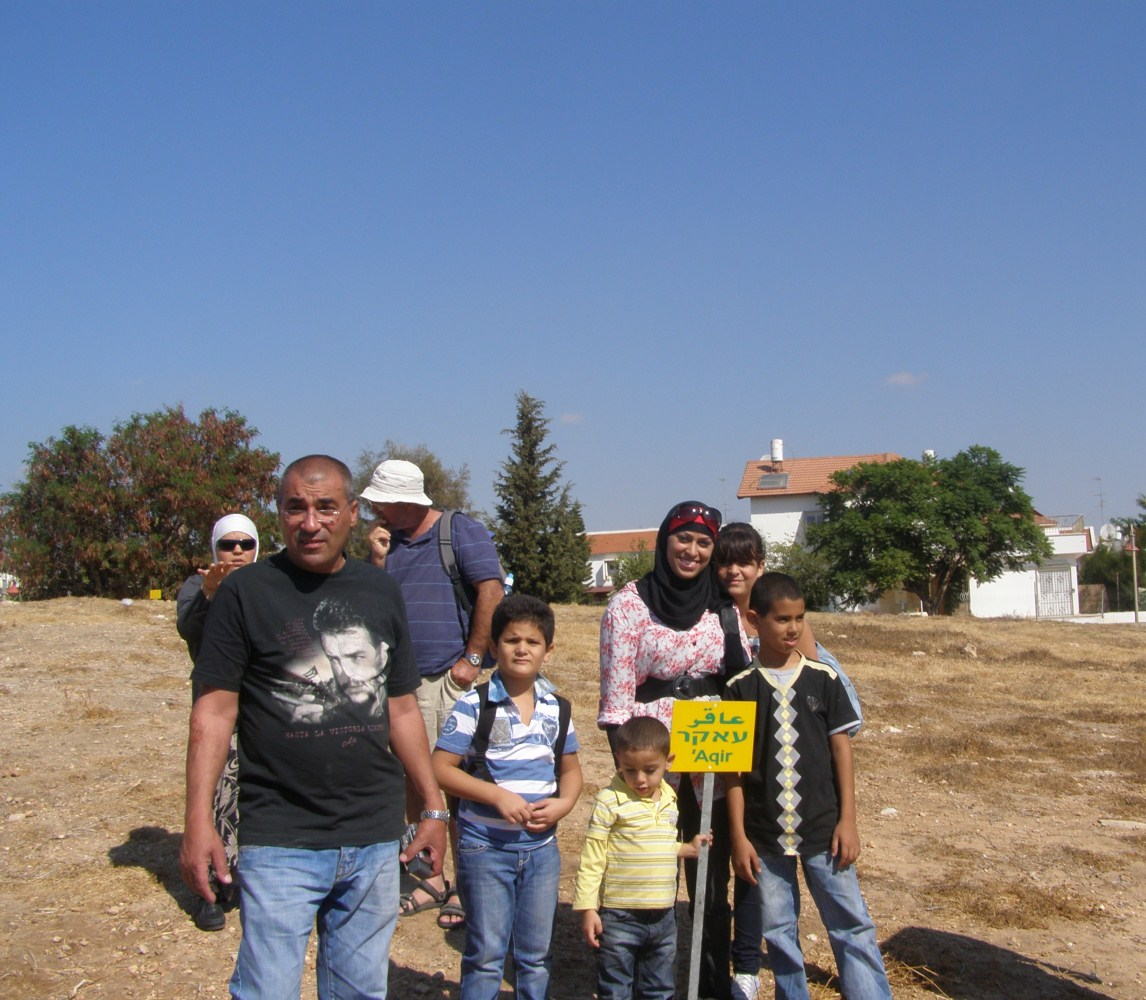
جولة الى قرية عاقر المهجرة / סיור בכפר הפלסטיני ההרוס עאקר
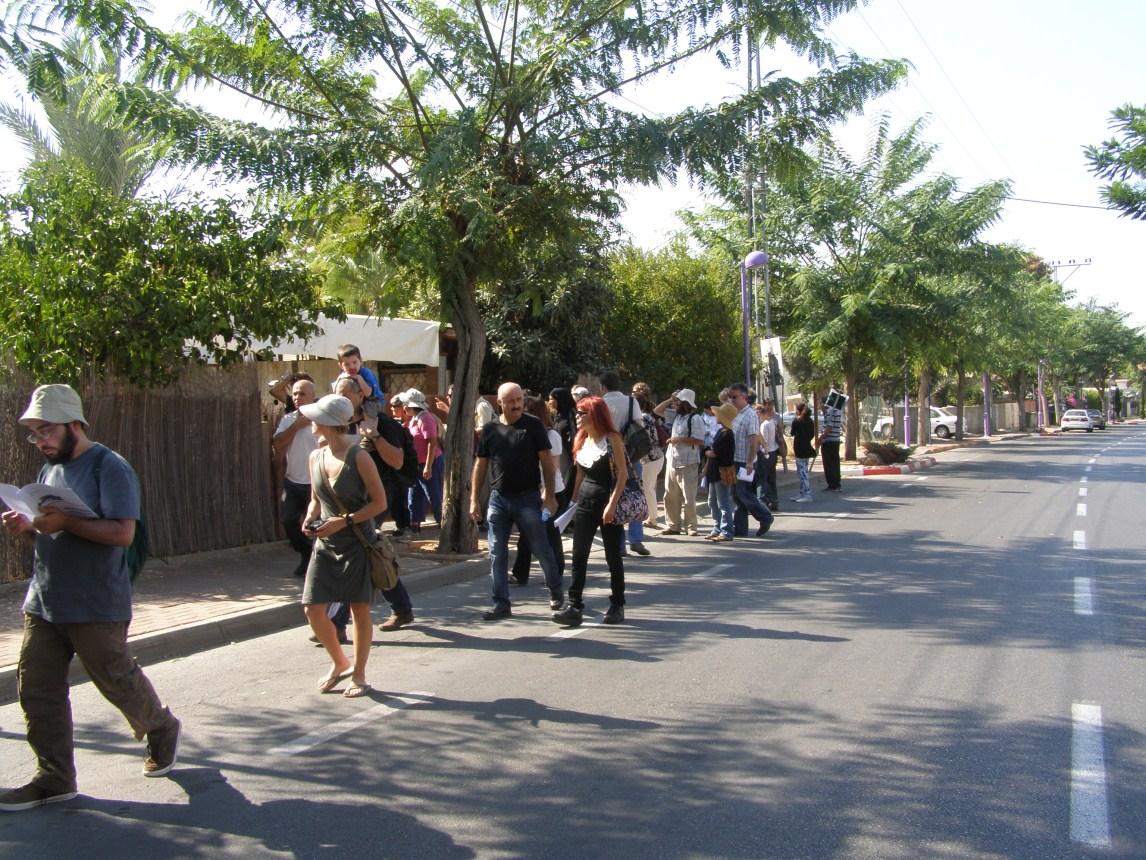
جولة الى قرية عاقر المهجرة / סיור בכפר הפלסטיני ההרוס עאקר
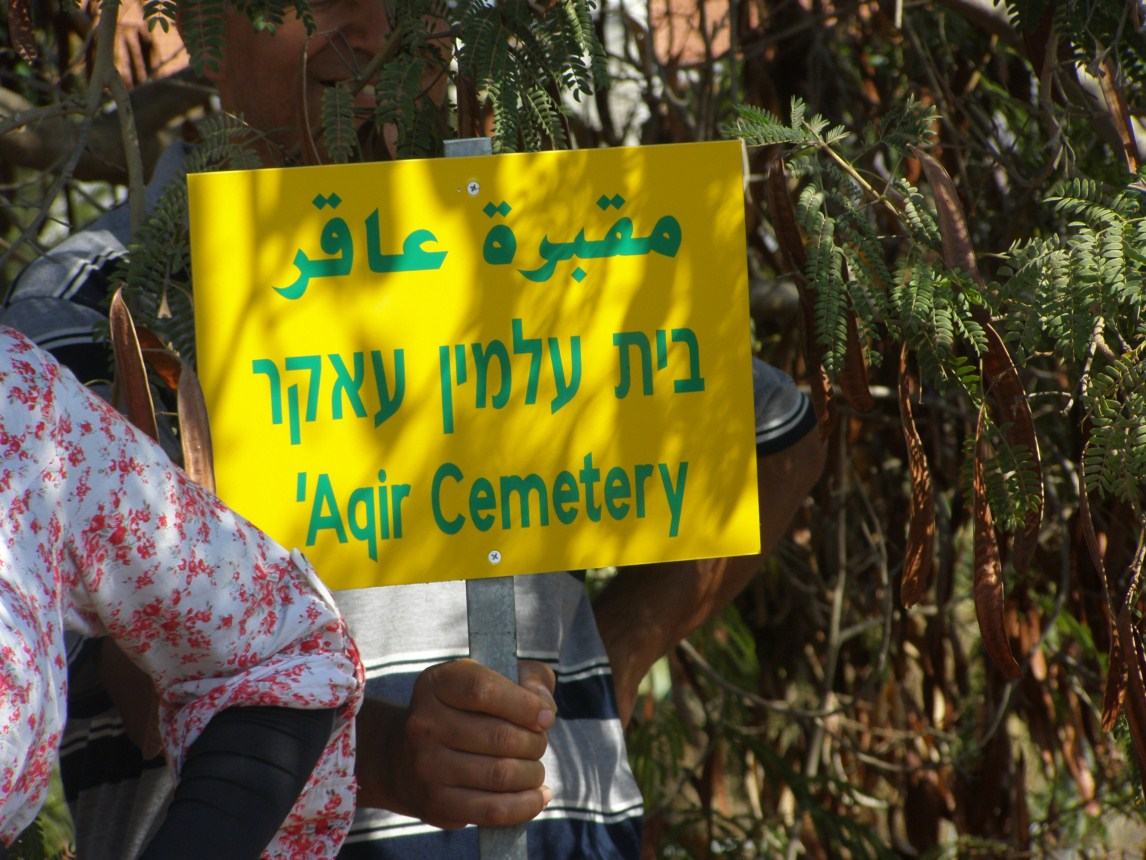
جولة الى قرية عاقر المهجرة / סיור בכפר הפלסטיני ההרוס עאקר
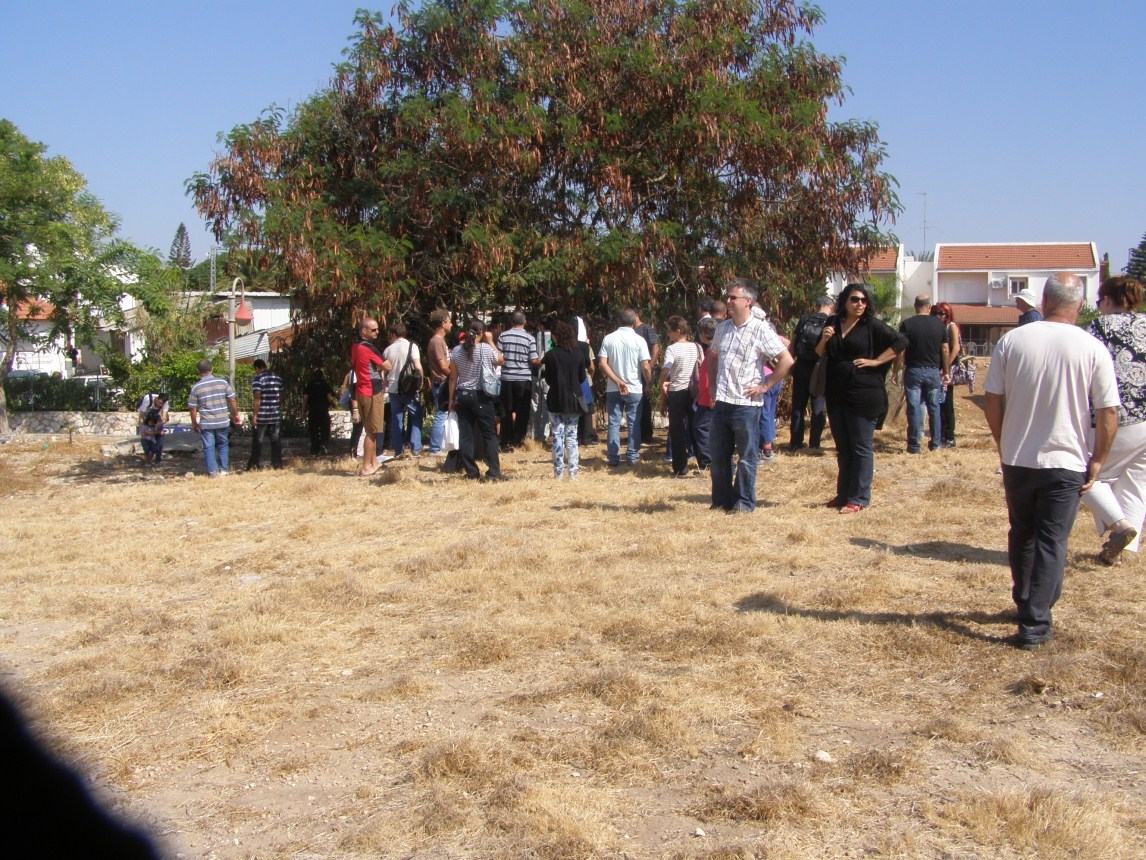
جولة الى قرية عاقر المهجرة / סיור בכפר הפלסטיני ההרוס עאקר
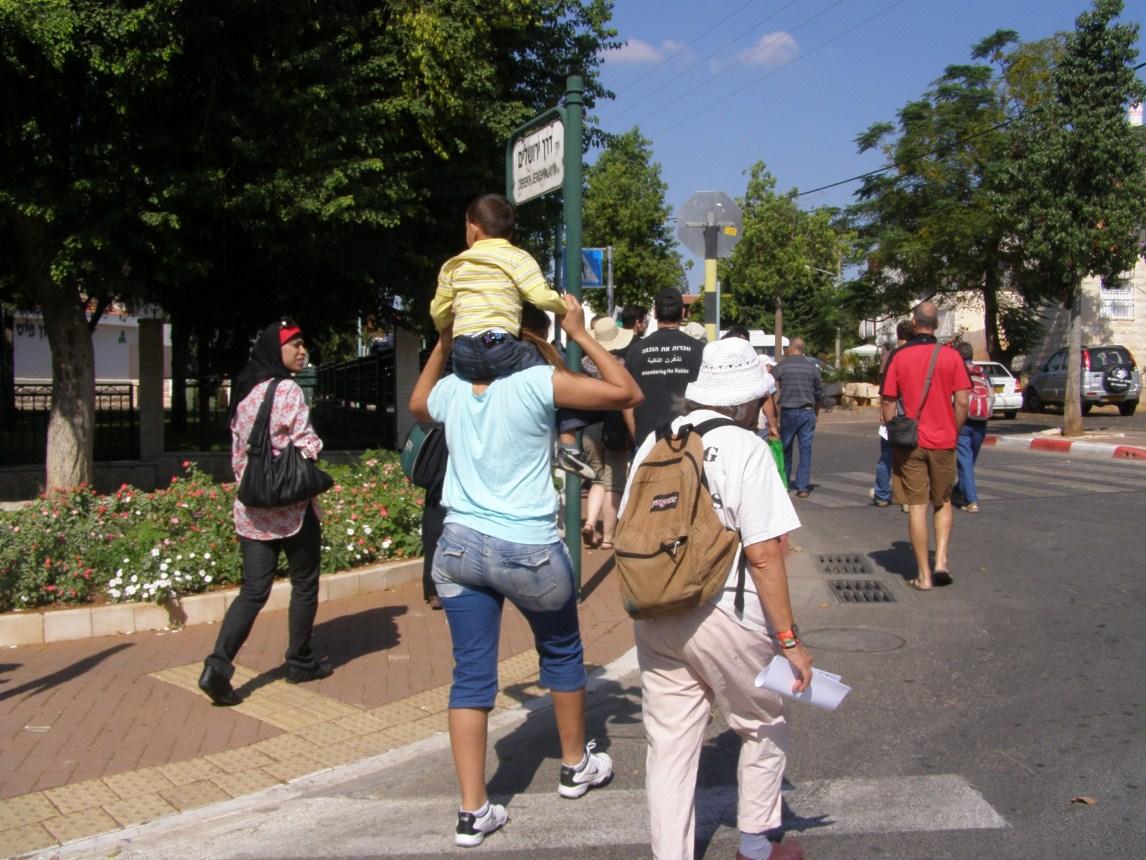
جولة الى قرية عاقر المهجرة / סיור בכפר הפלסטיני ההרוס עאקר
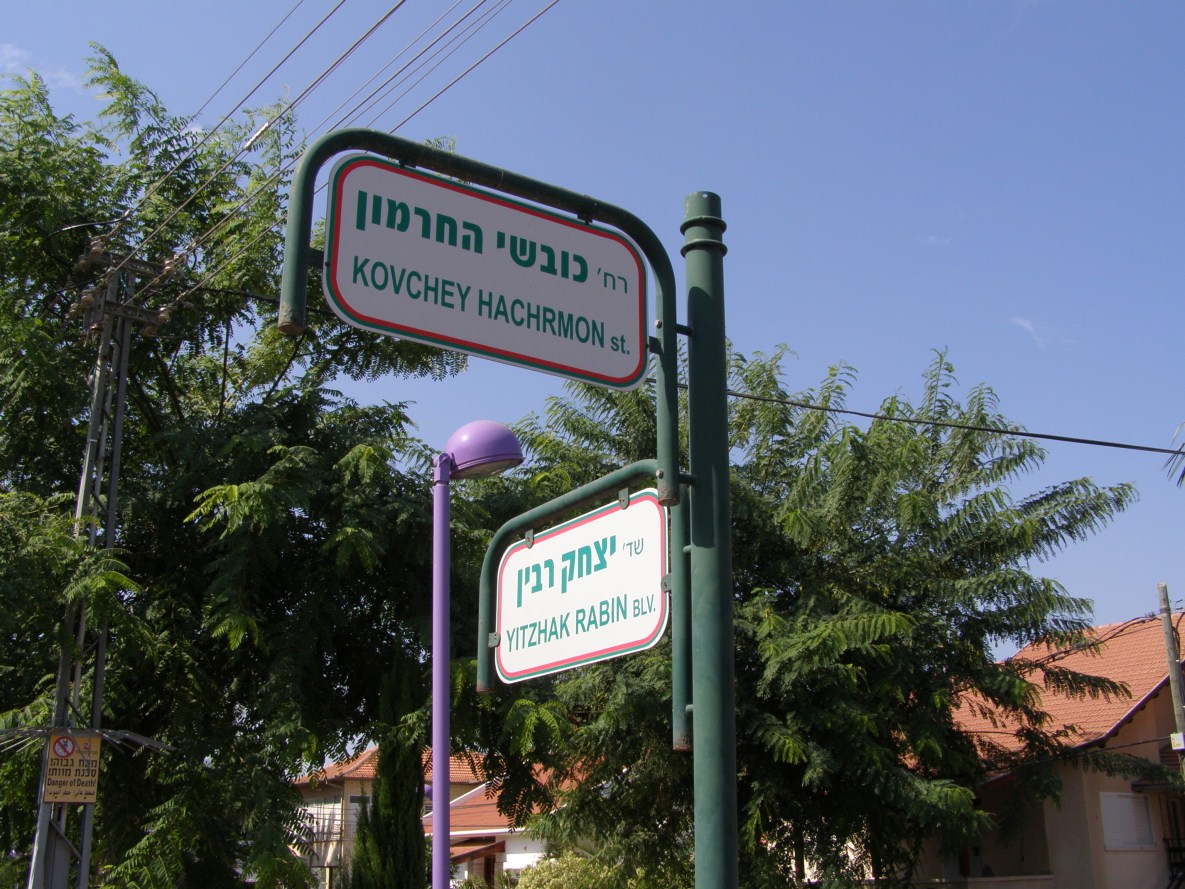
بلدة عقرون (عاقر المهجرة)/ קרית עקרון (כפר עאקר ההרוס)
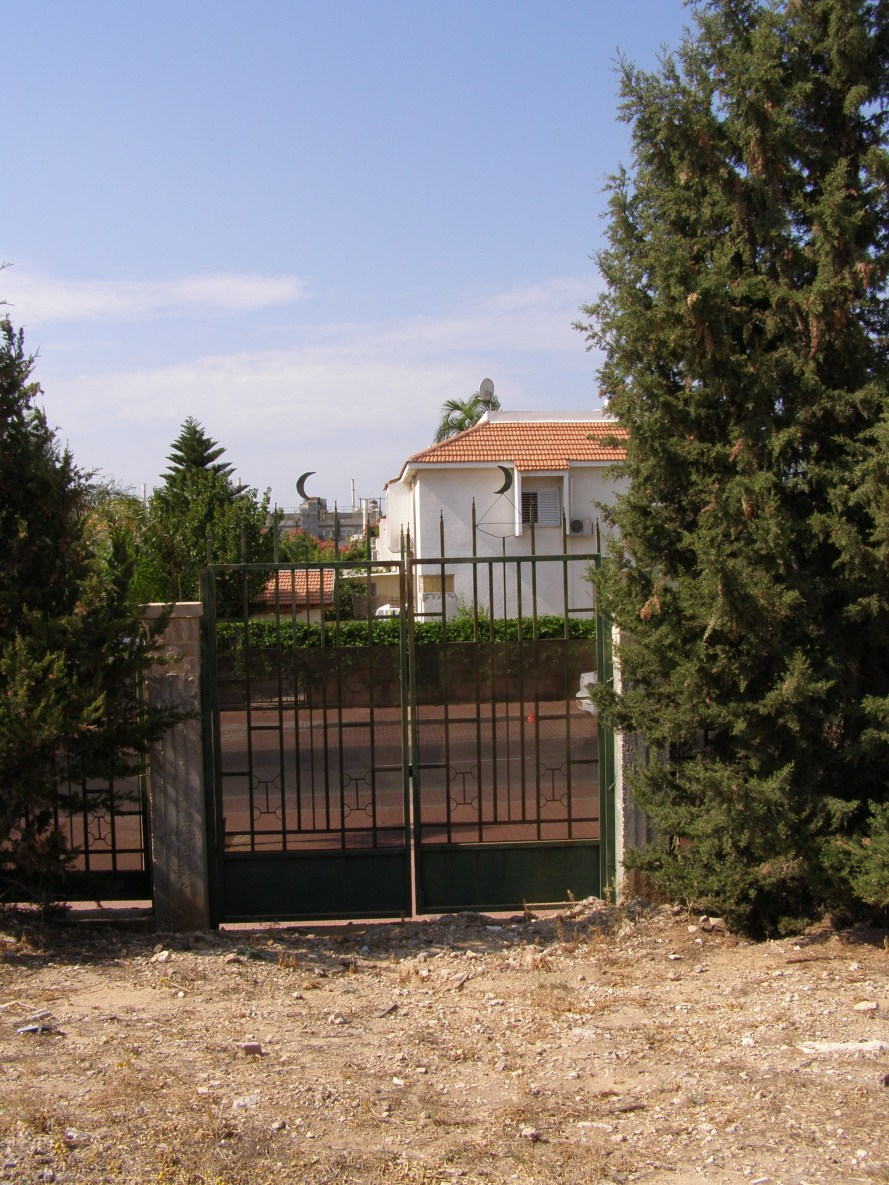
مقبرة عاقر / בית הקברות של הכפר עאקר


